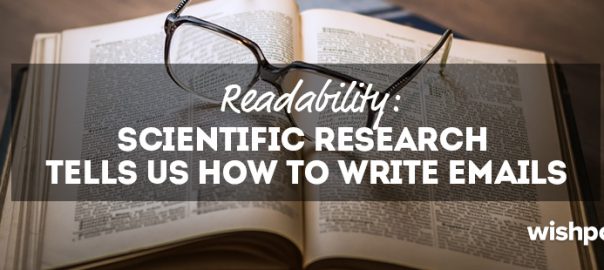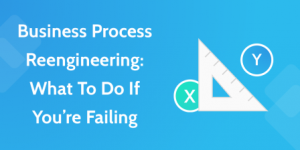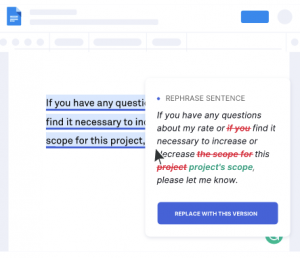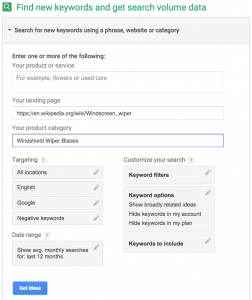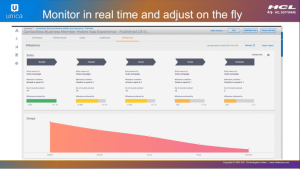
Do you have an email list?
Are you doing everything you can to monetize that email list?
It can be a challenge. You get a bunch of contacts and feel like you’ve won.
But unless that list is engaging (opening emails, clicking through) you might as well have no list at all.
This article will break down the science of readability how it can affect your entire email marketing strategy, and how knowing about it can boost opens, click-throughs, and how much your recipients love you.
Readability
Put simply, readability is defined as the ease with which a written text can be understood by a reader.
Why Does Readability Matter?
In 1998, traffic accidents caused 46 percent of all accidental deaths of infants and children aged 1 to 14. One study showed that the single strongest risk factor for injury in a traffic accident is the improper use of child-safety seats. Another study showed that, when correctly used, child safety seats reduce the risk of fatal injury by 71 percent and hospitalization by 67 percent. To be effective, however, the seats must be installed correctly. Other studies, showed that 79 to 94 percent of car seats are used improperly.
Public-health specialists suspected that poor comprehension of the installation instructions might contribute to this problem. They looked into the readability of the instructions and found that the average reading level of the 107 instructions they examined was the 10th grade, too difficult for 80% of adult readers in the U.S. When texts exceed the reading ability of readers, they usually stop reading.
In short… Matching your target audience’s reading ability and making your messaging simple saves lives.
(Source: Principles of Readability, DuBay 2004)
The formula to determine readability is a bit confusing, so I’ll break it down in a second. Here’s what it looks like:
Readability = 206.835 – (1.015 x number of words/number of sentences) – (84.6 x Number of Syllables/Number of Words)
The formula gives you a readability metric – a number ranging from 0 (difficult to comprehend) to 100 (easy reading):
- Scores between 90.0 and 100.0 are considered easily understandable by an average 5th grader.
- Scores between 60.0 and 70.0 are considered easily understood by 8th and 9th graders.
- Scores between 0.0 and 30.0 are considered easily understood by college graduates.

Click here to test your own content’s readability scores.
My recent article “Social Media Marketing Plan: The 11-Step Template” has a Flesch Reading Ease score of 61.7, or Grade 9 (13-15 year olds). And that’s about what I like to see.
The National Adult Literacy Study states the average adult in the U.S. reads at the 7th-grade level. Grade 9, therefore, is simple enough so there’s little alienation of readers (especially because our target market is college-educated) but not so complicated that readers will get lost in the language.
My Complete Guide to Lead Segmentation, however, has a reading ease score of 40.2 (grade 14). This is a bit high and I can’t help but think that that might be a contributing factor in the fact that the article didn’t do so well, despite being chock-full of valuable and educational content.
Paragraphs like “There’s no point in segmenting so specifically that creating a tailored marketing program for that segment would yield a negative ROI. Your segment should be ‘the largest possible homogeneous group worth going after,‘” may be accurate, but aren’t exactly the easiest sentence to read and understand quickly, online.
Reader’s Digest magazine has a readability index of about 65, Time magazine scores about 52 […] and the Harvard Law Review has a general readability score in the low 30s.
(Source: Wikipedia)
Actionable Readability Strategies for Your Email Marketing Campaigns:
- If your email is longer than 100 words, run it through the readability tester. If not, copy and paste it twice and try again.
- In general, avoid words with more than three syllables in email (unless they’re industry jargon which is often seen). You’re trying to communicate the value of clicking through quickly and obviously. Don’t let your email recipients get bogged down in language.
- Put your call-to-action and links front and center. Don’t hide them in paragraphs. They should be their own paragraphs or independent buttons.
- Write short sentences.
- State the main idea at the beginning of each paragraph.
- Use connective words (“however,” “therefore,” “but,” “lastly”) to guide recipients through the content.
- Use active voice (things “will” rather than “might be”) – this makes your writing concise.
- Use bullet-pointed lists.
- Use illustrations, photos and graphs to communicate quickly and make difficult concepts easier.
- Use the “question and answer” style of writing in which you ask a question (to frame the message) and then answer it immediately.
- Improve readability with large, sans-serif font and high-contrast color. (Serif if you’re still printing hardcopy).
- Use bolding, italics or sentence indentations to emphasize important messaging elements.
- Leave extensive whitespace around black text. Avoid crowding.
(Source: How to Improve the Readability of Anything You Write)
Science of Text and Images in Email
Once you’ve determined if your emails read well based on the words, you need to determine if they read well with the content.
Here are a few of the most important takeaways from The Science of Email Report from Litmus, Signals and Hubspot…
Effect of Number of Images on Email Click-through-Rate:

Analysis:
People say that they prefer emails with images in them, but when you actually test the implementation you find that it’s not the case. People like images, sure, but I believe they prefer simplicity more. Images can get in the way of communicating value or desire.
In What Format do You Prefer Email Messages?

Analysis:
Pretty is better than not pretty. The difficulty here, however, is the balance of personalization (which is best practice) and HTML (which, as you can see above, is preferred). However, these are often mutually exclusive. I can’t write you a personal-feeling email if I use a colorful and complicated email template.
Test personalization and HTML for yourself and for your own campaigns.
In What Format do You Prefer Email Messages? (By Age)

Analysis:
If we took the pie graph above at face-value, industries or businesses targeting a middle and older demographic group would be missing out. The difference between how much millennials prefer HTML’d emails and how much those over 45 care is significant.
Effect of Body Length on Click-Through-Rate:

Analysis:
Get to the point. Get to the point. Get to the point.
Effect of Subject Line Length on Click-Through-Rate:

Analysis:
Shorter subject lines allow your email recipients to quickly and easily determine if your email is relevant to them or worth learning more about. Feel free to “re-title” your blog articles for newsletter mailouts.
Effect of “Free,” “Download,” and “Tomorrow” in Subject Lines on Click-Through and Open Rates:

Analysis:
- Free: “Free” implies no commitment. I’m not asking anything from you in this email, but rather giving you something with no strings attached.
- Download: “Download” implies value. Many email recipients (especially in the marketing and B2B space) recognize that downloads are more comprehensive than articles.
- Tomorrow: “Tomorrow” implies urgency. It implies “this is important today, not next week.”
Email Readability & Mobile Optimization
What’s readable on your desktop may not be on mobile. And visa versa.
It doesn’t matter if my “ease of readability” score is on point if, when I click through on an email on my phone the header image is the size of a small country and it takes me an hour to scroll to the messaging beneath.
A Few Statistics on Mobile Optimization from The Ultimate Mobile Email Statistics Overview:
- 71.6% of consumers will delete emails if they don’t look good on mobile, while an average of 10% will read it anyway.
- 45% of consumers have unsubscribed from promotional emails because the emails or website didn’t work well on their smartphone
- 34% of consumers have marked promotional emails as spam because they didn’t work well on their smartphone
Analysis:
Essentially what these statistics are saying is that most people can’t stand non-mobile responsive email. They mark it as spam, unsubscribe, or just delete without clicking through.
Yet, as we saw up above, they also prefer HTML-formatting.
And HTML, as anyone creating optimized emails will know, can be difficult to get right on mobile. Yet it’s essential we put in the effort.
Wrapping it Up
Hopefully this article has given you some idea of the importance of readability and email optimization.
It’s not brain surgery. Just remember these best practices:
- Match your email’s readability to the audience receiving it
- Follow readability best practices such as short sentences, whitespace, high-contrast font, bolding, connective words and bullet-point lists
- Limit your images
- Use HTML in your emails unless your target market is older than 44+ (then it doesn’t matter)
- Check that HTML doesn’t break your email’s mobile optimization
- Limit your word count in both subject line and body copy
(151)
